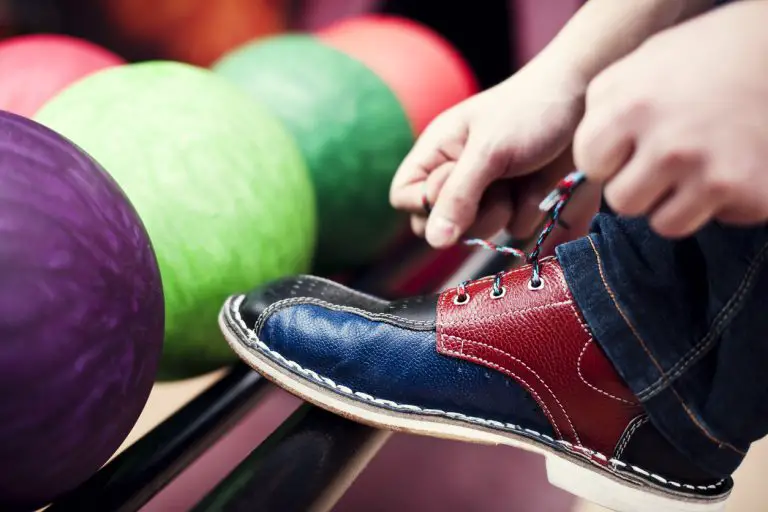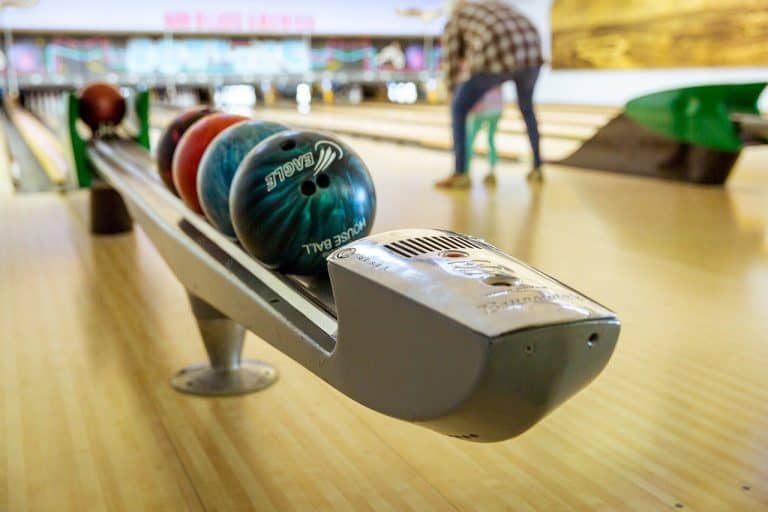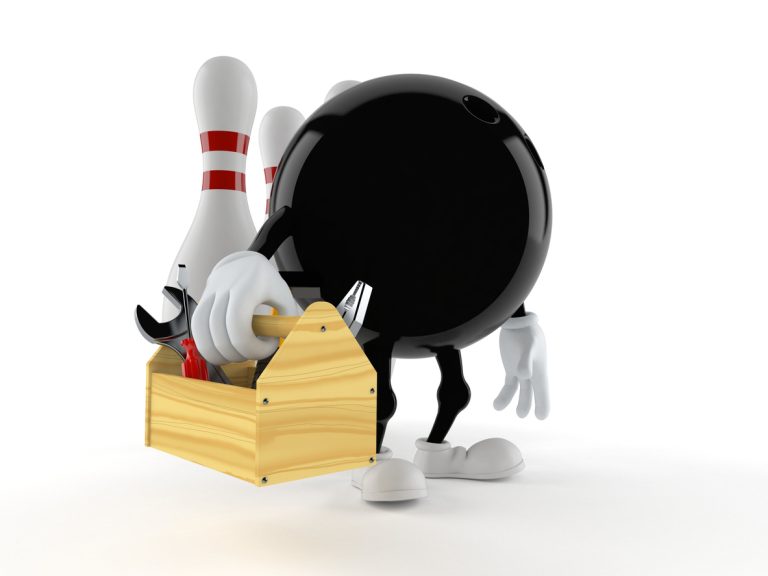Why Your Bowling Ball Bounces and What It Means
Have you noticed your pin count is plateauing? Are you also consistently bouncing your bowling ball? A bouncing ball could mean that your technique needs some work.
Your bowling ball bounces when it is thrown upward on delivery. The direct strike to the lane causes the bounce. This means that you need to practice your approach and delivery to gain control and improve accuracy. Once you are ready, lofting in moderation can provide a technical edge.
Read on to learn what causes a bowling ball to bounce and how it will affect your game. Then, keep reading to learn how to get improve your league average.
What Causes a Bowling Ball to Bounce?
When a bowler throws the ball, that technique is considered lofting (source.) There is a proper way to do so, but it is an advanced technique that can be misapplied. When a lofted bowling ball is overthrown, it will hit the ground directly and bounce.
When a bowler swings the ball, their arm moves in a semicircle. However, good bowlers smooth out the curve of that semicircle as the ball gradually descends into the lane. When a bowler curves their swing upward, the ball will launch into the air, drop, and hit the lane directly, resulting in the bounce.
Here are visuals provided by happybowlers.com:
Bouncing the ball on the lane wasn’t as frowned upon in the past. However, most bowling alleys in the US discourage bouncing the ball due to the damage it can cause.
Cover stocks, or the outer coverings of a bowling ball, are pretty durable and consist of materials like plastic, urethane, reactive resin, or particle. They make a lot of friction when they make contact with a dry lane (source.)
Additionally, bowling balls have a lot of weight. Some are high mass or contain most of their weight near the shell of the ball. Others are low mass, which generally holds most of their weight towards the middle (source.) Either way, when a ball is heavily lofted, it lands with a good amount of force. When the inertia from its speed combines with the ball’s weight, it drives the ball into the lane’s surface. This results in oil divots being chipped out of the lane.
That being said, some professional players take advantage of the ball bouncing. Finland’s Mika Koivuniemi plays in countries where damage to the lane is not as huge of a concern as in the US, which has influenced his technique.
When a ball bounces on the lane, it changes direction with each subsequent contact. This makes lofting at such a degree a risky move. However, if a bowler has enough control of the ball’s spin, they can pick up strikes with straight and powerful shots.
However, for the average bowler who may not be a master lofter, bouncing your bowling ball is a sign that you will need to improve your approach and delivery.
How to Prevent the Ball From Bouncing
If your lofting results in uncontrollable ball bounces, that is a good indicator to go back to basics. Before you can master a good loft, it’s important to work on establishing a smooth approach and delivery that will give you more control. In time, you will be ready to loft effectively, increasing your power and pin count.
Synchronizing the Release of the Ball While Maintaining Good Posture
The proper delivery of the ball in relation to your sliding bowling shoe is considered an “on time” delivery. This will give your ball the optimal descent onto the lane. Furthermore, maintaining a good posture will prevent you from making any sudden movements that will muddy your release. So let’s start working on that approach and delivery:
Approach
- Bend your knees. It’s important to keep your knees bent as you follow through. Good knee-flex will keep you from stiffening up upon release.
- Keep an athletic posture. As you perform the last two steps of your approach, be sure to avoid excessive waist bending. You do not want to be leaning in or pulling away from the foul line at the critical point of release. Furthermore, thrusting forward at the waist towards the floor could cause you to drop your ball behind the foul line at a steep angle.
- Avoid hanging on to the ball. If you hang on to the bowling ball too long, your grip could throw the ball upwards. This will cause bouncing upon hitting the ground, which will give you less control of the ball.
- Visualize your descending drop. Imagine how a passenger plane hits the ground. Your approach should meet similar standards. Your goal should be to drop the ball at a gradually descending angle so that it hits the ground smoothly and travels with more control.
Delivery
- Exit your bowling thumb first. Consider exiting your bowling thumb slightly before you exit the bowling fingers. The thumb should exit once it reaches the back heel of your sliding bowling shoe.
- Then exit your fingers. Your available fingers will give you control over the ball’s direction before your release. Then, exit the fingers once the ball arrives at the tip of your sliding bowling shoe.
Properly Lofting the Bowling Ball
Alternatively, while you should avoid bouncing the ball, holding back too much will take away from your rev-rate (definition) and could also lead to unexpected hooks mid-lane. A balanced loft can eliminate the unpredictable behavior that can occur when you prematurely drop the ball.
When you consistently and smoothly deliver the ball past the foul line, you will be rewarded with positive results. You’ll have a better time directing the ball due to access to finger rotation and additional control of the degree of axis tilt. You will also benefit from a better back-end ball reaction, more speed, and improved skid length command.
- Tighten your grip. If your grip on the ball is too loose, it will cause you to drop the ball prematurely before the foul line. Alternatively, a firmer grip will give you more control over your delivery.
- Delay the release. Make sure to wait to release the bowling ball until your bowling thumb meets the toe of your sliding bowling shoe. Delaying the release gives you more time to control spin, as well as more drop distance ahead of the foul line.
- Power your swing and follow through. Like any sport, bowling has an element of attack. As long as you do not sacrifice form for power, adding force to your swing, and following through with a good delivery, will accelerate the ball.
- Propel your ball with some knee-flex. With the right amount of bend at the knee of your sliding leg, you will give momentum to your ball, allowing it to move past the foul line while ensuring a gradual descent.
- Deliver 12 inches (.3m) beyond the foul line. When delivering the ball, make contact with the lane twelve inches beyond the foul line.
Final Thoughts
In short, a bowling ball bounces when it is overthrown. If the ball is released on an upward swing, the resulting impact on the lane will be more direct and cause a bounce. The best remedy is to improve your approach and delivery to guide the ball on a smooth descending angle. Once you are ready, a good loft will give you more speed and control.
Sources
- Bowling Ball: Release Your Bowling Ball Into The Lane Properly
- Bowling-Tips: Bowling Terms – A to Z Bowling Glossary
- Bowling Bliss: What Constitutes A Foul In Bowling?
- Bowling Ball: Don’t Drop Your Bowling Ball, Loft It
- Bowling Ball: Bowling Ball Skid
- YouTube: Week 5: Swing & Slide-Gary Beck
- Happy Bowlers: Bowling tips: How to stop grabbing & lofting the ball all over the lane?
- Bowlers Advantage Pro Shops: Bowling Ball Basics







